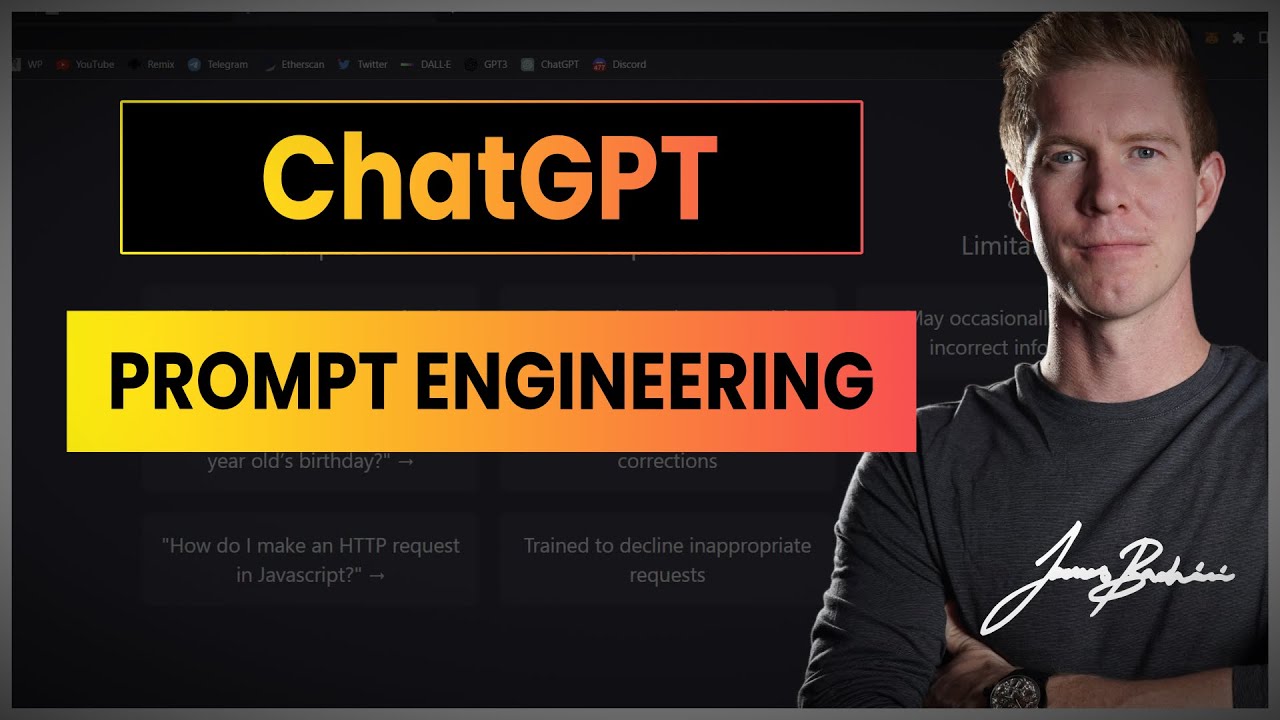Chatbots and virtual assistants have become an essential part of many businesses in recent years. They can improve customer service, reduce wait times, and handle repetitive tasks, freeing up time for employees to focus on more complex issues.
However, creating a chatbot that can effectively communicate with customers requires advanced prompt engineering.
Advanced ChatGPT prompt engineeringinvolves using natural language processing (NLP) and machine learning techniques to create prompts that are more effective in engaging customers and providing them with the information they need.
In this article, we'll take a closer look at the key concepts behind advanced prompt engineering, and how businesses can use them to create more effective chatbots.
What Is Advanced ChatGPT Prompt Engineering?
Advanced ChatGPT prompt engineering involves using machine learning algorithms to create more engaging and effective prompts for chatbots and virtual assistants.
This involves analyzing user interactions and feedback to create prompts that are more natural and human-like.
One of the key components of advanced prompt engineering is natural language processing (NLP), which allows chatbots to understand and respond to customer inquiries using natural language.
NLP involves breaking down sentences into their component parts, identifying keywords and phrases, and analyzing the context in which they are used. This enables chatbots to provide more accurate and relevant responses to customer inquiries.
Another important aspect of advanced prompt engineering is machine learning, which involves training chatbots on large datasets to improve their accuracy and effectiveness over time.
By analyzing user interactions and feedback, chatbots can learn from their mistakes and make more accurate predictions about what customers are looking for.

Advanced ChatGPT Prompt Engineering
How Does Advanced Prompt Engineering Work?
Advanced prompt engineering works by analyzing user interactions and feedback to create prompts that are more natural and effective.
This involves using NLP and machine learning techniques to create prompts that are more contextually relevant and engaging.
NLP algorithms can help chatbots to understand the intent behind customer inquiries, allowing them to provide more accurate and relevant responses.
For example, if a customer asks "What are your businesshours?", the chatbot can use NLP to identify the keyword "businesshours" and respond with the appropriate information.
Machine learning algorithms can also be used to improve the accuracy and effectiveness of prompts over time.
By analyzing user interactions and feedback, chatbots can learn from their mistakes and make more accurate predictions about what customers are looking for. This can help to improve the overall customer experience and reduce wait times.
Benefits Of Advanced Prompt Engineering
There are several benefits to using advanced prompt engineering to create more effective chatbots and virtual assistants. These include:
- Improved customer engagement- By creating prompts that are more natural and engaging, businesses can improve customer engagement and satisfaction. This can lead to increased loyalty and repeat business.
- Reduced wait times- Chatbots can handle simple customer inquiries quickly and efficiently, reducing wait times and improving the overall customer experience.
- Cost savings- By automating simple tasks and inquiries, businesses can reduce the need for human customer service representatives, saving time and money.
- Improved data analysis- By analyzing user interactions and feedback, businesses can gain valuable insights into customer preferences and behaviors, allowing them to improve their products and services.
Challenges Of Advanced Prompt Engineering
While there are many benefits to using advanced prompt engineering, there are also some challenges to consider. These include:
- Data privacy concerns- Chatbots may collect sensitive customer data, such as contact information or purchase history. It is important for businesses to ensure that this data is stored securely and used appropriately.
- Integration with existing systems- Integrating chatbots with existing business systems and databases can be challenging, especially if these systems are outdated or complex.
- Accuracy and reliability- Chatbots must be able to provide accurate and reliable responses to customer inquiries. If they provide incorrect information or fail to understand customer inquiries, it can damage the customer experience and harm the reputation of the business.
- Lack of human touch - While chatbots can be effective in handling simple customer inquiries, they lack the human touch and empathy that can be important in more complex situations. This can limit their effectiveness in certain contexts.

ChatGPT: 5 Prompt Engineering Secrets For Beginners
Best Practices For Advanced ChatGPT Prompt Engineering
Here are some best practices for advanced ChatGPT prompt engineering:
1. Conduct Thorough User Research
The first step in creating effective chatbot prompts is to understand the needs and preferences of your target audience. Conduct user research to identify common questions, concerns, and pain points.
Use this information to create prompts that address these issues and provide relevant and helpful responses.
Suppose you run an online retailer that specializes in selling pet food and supplies. To create effective chatbot prompts, you would first need to understand the needs and preferences of your target audience.
You might conduct user research by analyzing customer reviews, conducting surveys, or interviewing existing customers to identify common questions, concerns, and pain points related to pet care.
2. Use Natural Language Processing (NLP) Techniques
NLP techniques can help chatbots better understand the context and intent behind user queries. This allows chatbots to provide more accurate and relevant responses.
Use NLP techniques such as sentiment analysis, part-of-speech tagging, and entity recognition to enhance the accuracy and effectiveness of your chatbot prompts.
Suppose a customer types "I'm having trouble finding the right food for my dog" into your chatbot. To provide an accurate and relevant response, your chatbot might use NLP techniques such as sentiment analysis and entity recognition to understand the customer's query.
By analyzing the sentiment behind the customer's statement and identifying keywords such as "food" and "dog," your chatbot could provide personalized recommendations for dog food based on the customer's specific needs.
3. Use Machine Learning Algorithms
Machine learning algorithms can help chatbots improve over time by learning from previous interactions and continuously updating their responses. Use machine learning algorithms such as neural networks and decision trees to improve the accuracy and relevance of your chatbot prompts.
Suppose your chatbot has been in operation for several months and has interacted with thousands of customers.
By analyzing these interactions, your chatbot can use machine learning algorithms to identify patterns in customer behavior and continuously update its responses.
For example, if your chatbot frequently receives queries about shipping times during holiday periods, it could learn to proactively provide this information during those times of the year.
4. Monitor And Analyze User Interactions
Monitor and analyze user interactions to identify areas for improvement. Use this data to optimize your chatbot prompts and improve the overall customer experience. Look for patterns in user queries and responses to identify common issues and opportunities for improvement.
Suppose your chatbot receives a high volume of queries about a specific product that is out of stock. By monitoring and analyzing these interactions, you could identify this issue and take steps to address it.
For example, you might update your chatbot prompts to suggest similar products that are in stock, or you might take steps to restock the out-of-stock product.
5. Integrate With Existing Systems
Integrating your chatbot with existing systems such as CRM software or customer databases can provide additional context and information that can help improve the accuracy and relevance of your chatbot prompts.
This can also help reduce the time it takes to resolve customer inquiries by providing chatbots with access to relevant customer data.
Suppose a customer types "What was my last order?" into your chatbot. By integrating your chatbot with your CRM software, your chatbot could access the customer's order history and provide an accurate response.
This integration could help improve the accuracy and relevance of your chatbot prompts while also reducing the time it takes to resolve customer inquiries.
6. Provide Fallback Options
No matter how advanced your chatbot prompts are, there will always be some questions or issues that they cannot handle.
Providing fallback options such as the ability to transfer the conversation to a human representative or providing a phone number or email address for additional support can help ensure that customers always have access to the help they need.
Suppose your chatbot receives a query that it cannot handle, such as a complex technical issue. By providing a fallback option to transfer the conversation to a human representative, your chatbot could ensure that the customer receives the help they need.
This fallback option could also help improve customer satisfaction by providing personalized and timely support.
By following these best practices for advanced ChatGPT prompt engineering, businesses can create chatbots that provide more personalized, efficient, and engaging customer experiences.
People Also Ask
What Is The Difference Between Basic And Advanced Prompt Engineering?
Basic prompt engineering involves creating prompts that are simple and straightforward. Advanced prompt engineering, on the other hand, involves using NLP and machine learning algorithms to create prompts that are more contextually relevant and engaging.
How Can Businesses Ensure The Accuracy Of Chatbot Responses?
Businesses can ensure the accuracy of chatbot responses by monitoring and analyzing user interactions, providing fallback options, and integrating chatbots with existing business systems and databases.
What Are The Benefits Of Using Chatbots For Customer Service?
The benefits of using chatbots for customer service include improved customer engagement, reduced wait times, cost savings, and improved data analysis.
Can Chatbots Replace Human Customer Service Representatives?
While chatbots can handle simple customer inquiries quickly and efficiently, they lack the human touch and empathy that can be important in more complex situations. As such, chatbots are unlikely to replace human customer service representatives entirely.
Conclusion
In conclusion, advanced ChatGPT prompt engineering is a powerful tool for businesses looking to provide more personalized, efficient, and engaging customer experiences.
By following best practices such as conducting user research, using NLP techniques and machine learning algorithms, monitoring and analyzing user interactions, integrating with existing systems, and providing fallback options, businesses can create chatbots that not only reduce customer service costs but also improve customer satisfaction and loyalty.
With the increasing demand for efficient and convenient customer service, advanced ChatGPT prompt engineering is becoming more important than ever for businesses of all sizes and industries.